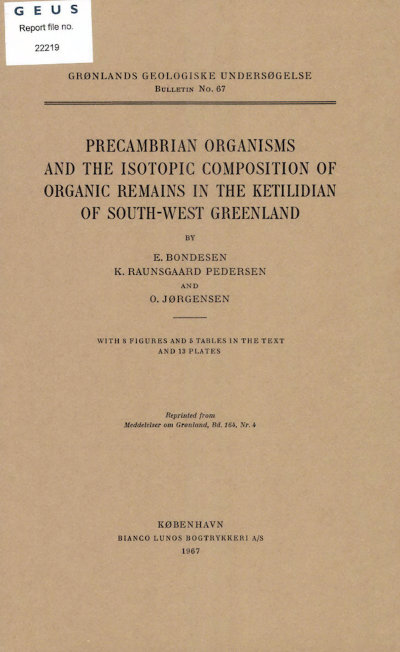Precambrian organisms and the isotopic composition of organic remains in the Ketilidian of South-West Greenland
DOI:
https://doi.org/10.34194/bullggu.v67.6601Abstract
The geological setting of organic remnants from well preserved Ketilidian rocks of SW Greenland is presented. The absolute age (2000? m. y.) of the rocks is discussed and compared to that of other regions. Many types of organic remnants have been found in these low-metamorphic rocks. Most of the organic remnants are microscopic globules and fragments with cell-like structures. The type which is best preserved is a complex globular structure on about 1/2mm in diameter. This structure is established as a new monotypic form genus Vallenia erlingi (Raunsgaard Pedersen) n. gen. et sp. Stromatolithes and other macro-structures of possible organic origin are also found. A coal-graphite layer indicates that large-scale accumulation of organic matter has taken place. The organic remnants are so well preserved that it has been possible to extract small amounts of paraffines (n-C11 to n-C31 with maximum about n-C18 to n-C20) and other organic compounds. The carbon-isotope composition from carbonaceous matter and carbonates from a number of samples has been determined. The analytical procedure is described. The result of this investigation shows δ C13-values which indicate that the carbonaceous material is probably of organic origin.
Downloads
Published
Issue
Section
License
This article is distributed under a CC-BY 4.0 licence, permitting free redistribution and reproduction for any purpose, even commercial, provided proper citation of the original work. Author(s) retain copyright over the article contents.


